Investor's Corner
Tesla – SolarCity merger: the devil is in the details
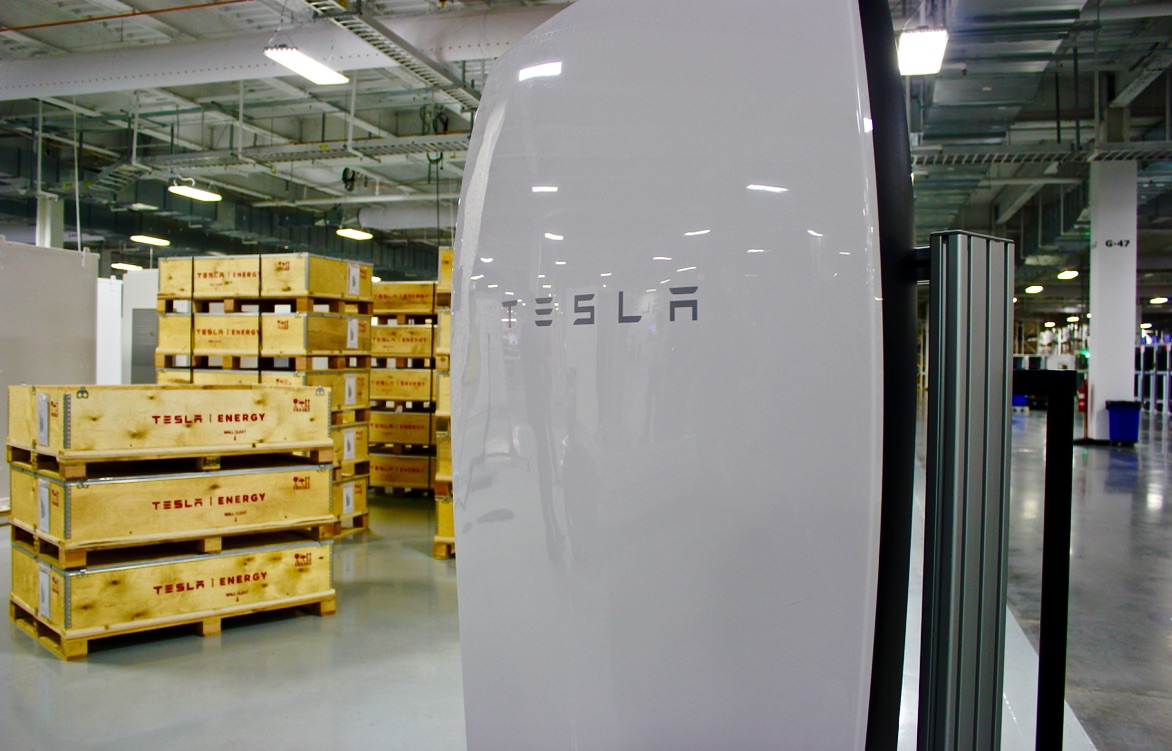
On Monday August 1st, Tesla announced that it had reached a definitive agreement to acquire SolarCity. Tesla provided investors with an Investor Presentation slide set, and a 180 pages long Form 8-K filing.
Investor Presentation
In the slide presentation titled Tesla to acquire SolarCity, the company provided details for the proposed transaction.
Tesla would acquire SolarCity in an all-stock transaction valued at $2.6 billion. SolarCity shareholders will receive 0.110 shares of Tesla stock for each share of SolarCity valued at $25.37 per share. The transaction is expected to close in Q4 2016 and subject to the approval by a majority of disinterested shareholders at both SolarCity and Tesla, to be voted upon at each respective shareholder meeting.
The Tesla SolarCity “strategic” combination would:
- Accelerate the transition to sustainable energy
- Create world’s only integrated sustainable energy company
- Drive products development and innovation
- Catalyze solar energy adoption
- [Provide] substantial cost efficiencies.
The presentation stated that SolarCity provides best-in-class rooftop solar installation costs of $1.92 per watt as of 4Q15, and is America’s #1 vertically integrated provider of residential and commercial solar, with a 35% share of the residential market and 14% share of the commercial market in 2015. Tesla is the world’s fastest growing car company, with an 18% market share of the “large Luxury sedans” in 2015 with its Model S.
The combined company would leverage Tesla’s design and manufacturing expertise:
- Speed development of beautiful, differentiated and technologically superior products
- Improve solar value proposition by integrating storage, reducing system cost and improving reliability
- Fully integrate product suite for a seamless user experience, delivering an improved, lower-cost product for customers
- Develop products for residential, commercial and grid-scale applications
- Take advantage of SolarCity’s industry-leading project finance capabilities
One of the major points of the slide presentation is that the combined companies would provide “substantial cost efficiencies”, with $150 million of direct cost synergies expected to be achieved in the first full year after closing the transaction.
The cost synergies would be driven by sales and marketing efficiencies, and corporate and overhead savings. The value proposition is improved by lowering hardware costs, reducing installation and service costs, improving manufacturing efficiency, reducing customer acquisition costs, and cutting capital costs.
Form 8-K Filing
The very long document filing includes the usual boilerplate for merger transactions, but also reveals quite a few interesting tidbits, buried into the document. These are quotes from the document.
Stockholders of SolarCity will be asked to vote on the adoption and approval of the Merger Agreement and the Merger, and stockholders of Tesla will be asked to vote on the approval of the Merger and the Share Issuance, at special meetings of the stockholders of SolarCity and Tesla, respectively, that will be held on dates to be announced.
“The Merger Agreement and the Merger be adopted and approved by stockholders of SolarCity, including by the holders of a majority of the total votes of shares of SolarCity common stock […] that are not owned by Mr. Elon Musk and the other directors. other than Nancy E. Pfund and Donald R. Kendall, Jr.”
Similarly, “the Merger and the Share Issuance be approved by the stockholders of Tesla, including by the holders of a majority of the total votes of shares of Tesla common stock […] that are not owned by Mr. Elon Musk and the other directors and the named executive officers of SolarCity and certain of their affiliates.”
This means that the approval will likely rely on mutual fund managers and banks that hold large chunks of both Tesla and SolarCity stock.
As part of the agreement, SolarCity has a 45-day period known as a “go-shop”, which runs through September 14, 2016. This means that SolarCity is allowed to solicit alternative proposals during that time.
The all-stock transaction, with an equity value of $2.6 billion, is based on the 5-day volume-weighted average price of Tesla shares as of July 29, 2016. Under the agreement, SolarCity stockholders will receive 0.110 Tesla common shares per SolarCity share, valuing SolarCity common stock at $25.37 per share based on the 5-day volume weighted average price of Tesla shares as of July 29, 2016.
The “Excluded Company Parties”, i.e. the directors and named executive officers other than Nancy E. Pfund and Donald R. Kendall, Jr., that will not be able to vote at the Company Stockholders Meeting include Lyndon R. Rive, Peter J. Rive, Tanguy V. Serra, Hayden D. Barnard, Seth R. Weissman, Elon Musk, John H.N. Fisher, Antonio Gracias and Jeffrey B. Straubel.
While most stock options equity awards of each company will be automatically converted into stock options of the “merged” company, the stock options set forth in a “Company disclosure letter” shall be cancelled for no consideration. It turns out that these options are the ones that were granted by SolarCity to Lyndon and Peter Rive, the CEO and CTO of SolarCity. These options amounted to about $128 million, and would have been earned over a 10 year period, based on achieving a set of goals of SolarCity stock price and operational results. For some unknown treason, Elon Musk’s cousins will get the shaft in the merger transaction related to their stock options.
But do not feel too bad for the cousins. According to a research report from Reuters, that analyzed the results of the merger, “three of Musk’s relatives, including brother Kimbal Musk and cousins Lyndon Rive and Peter Rive, will own a combined stake of 0.5 percent in Tesla. Kimbal Musk is a director of Tesla.”
According to Reuters “Elon Musk and key institutional investors will probably tighten their control over electric car maker Tesla Motors Inc after it acquires sister company SolarCity Inc.” “The largest institutional shareholder, Fidelity Management and Research, will see its stake grow from 12.2 percent to 13.4 percent. Two Fidelity-managed funds, Fidelity Contrafund and Fidelity OTC, together will control another 7.3 percent, up from 6.5 percent.”
Musk will remain the largest individual shareholder, boosting his stake from 23.2 percent to 25.0 percent according to Reuters.
Note that Fidelity has already come out in favor of the merger.
“Musk, eight major institutional investors and the two Fidelity funds control 45.7 percent of Tesla. After the merger, the same group’s combined stake will rise to 49.0 percent.” “Other major institutional shareholders include Scottish investment manager Bailie Gifford & Co, which will maintain an 8.9 percent stake in the combined companies; T. Rowe Price Associates, 5.5 percent, and Vanguard Group, 3.6 percent. Big banks, including several Tesla lenders, also will maintain significant stakes after the merger: Bank of Montreal, 4.1 percent; Morgan Stanley, 3.0 percent; Goldman Sachs, 2.2 percent, and J.P. Morgan Chase, 1.0 percent.”
What this all means is that individual investors will have no say in the approval of the merger, and only a few more institutional investors are needed, besides Fidelity, to approve the merger. The only thing that could derail the merger is a third party bid for SolarCity, during the go-shop period. Given how debt ridden is SolarCity, the chance of of such a bid are fairly remote.
Market Reaction
The initial market reaction to the details of the merger agreement was mixed, but eventually turned negative. On Monday the stock reached $236, but closed at $229. On Tuesday the stock initially sold off even more to $221, closing the session at $227.
Looking at the chart, The MACD has started pinching, indicating a possible end of the MACD-run that started on July 1st. Anyone selling today would have had a nice $11 gain, over a 1-month period, a very nice return. I personally closed my July 1st call option trade (I was long Sept 230 calls) when TSLA reached $236 on Monday. I was planning to close my trade before the Quarterly report is released on Wednesday, and the high point of Monday made it a perfect exit. Notice that I never hold options or stock before a quarterly report, especially for a volatile stock as TSLA, as the post report swings are so wide that one can easily lose their shirt in the the span of a few hours.
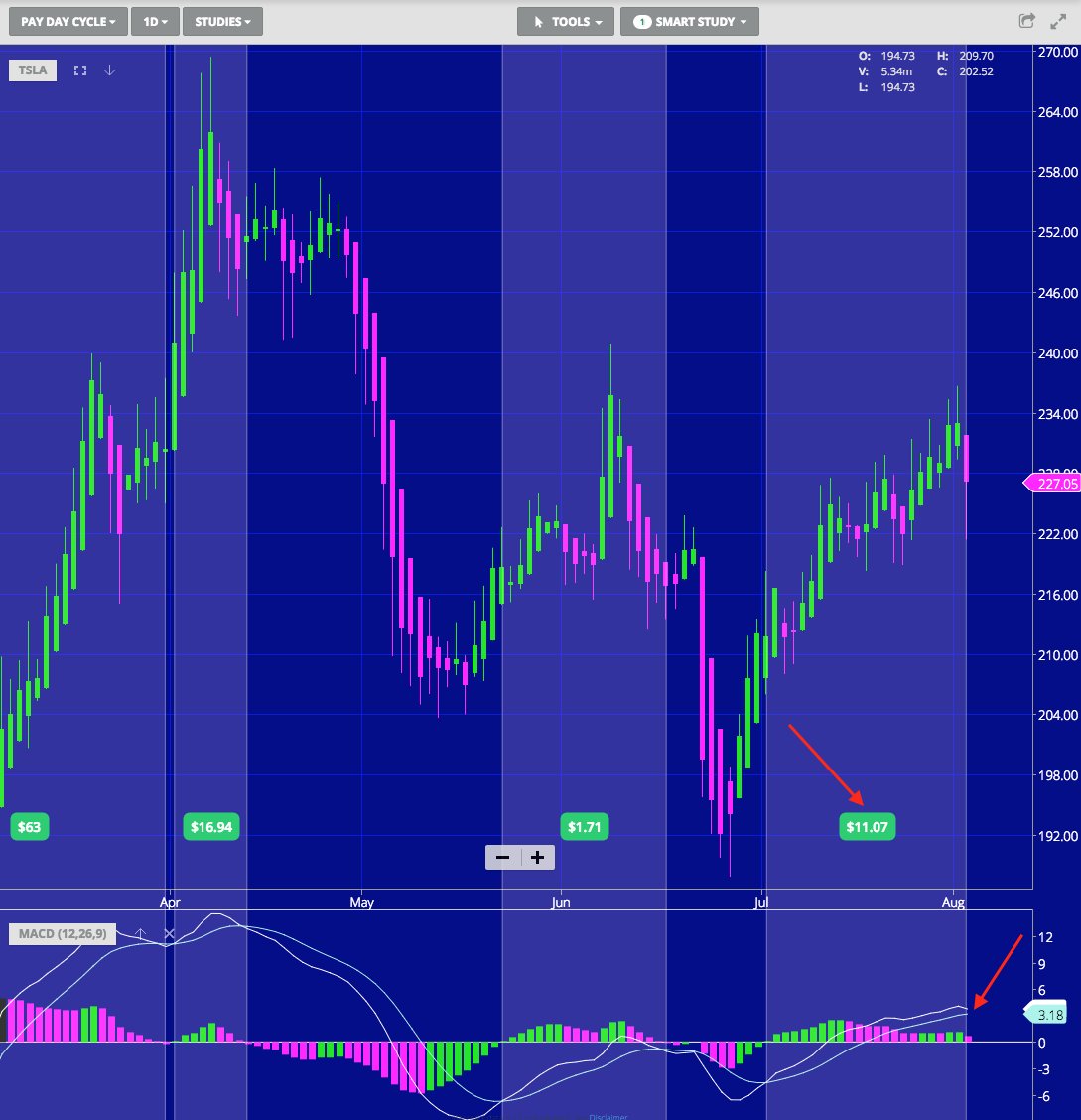
Source: Wall Street I/O

Investor's Corner
Tesla stock closes at all-time high on heels of Robotaxi progress
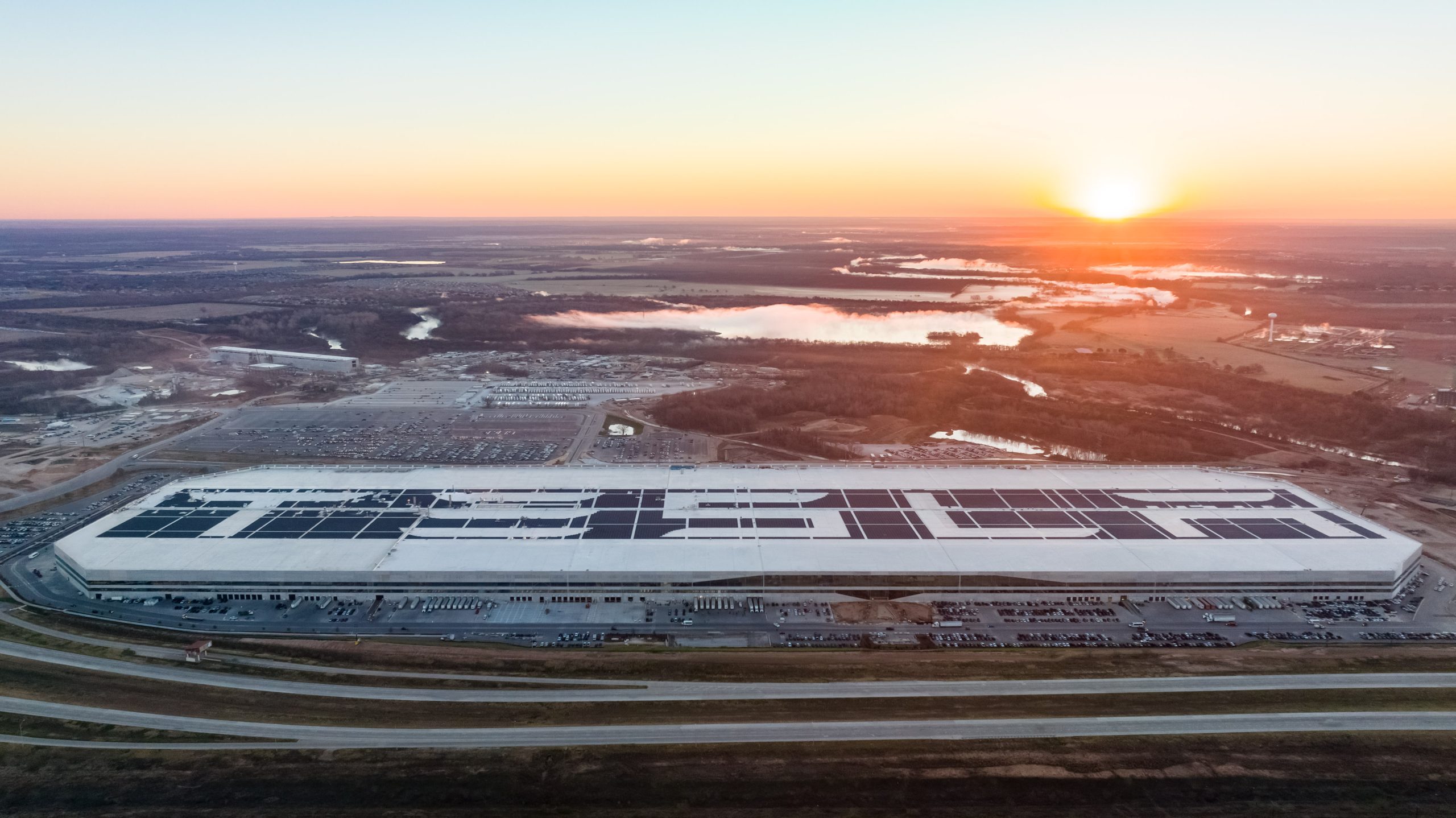
Tesla stock (NASDAQ: TSLA) closed at an all-time high on Tuesday, jumping over 3 percent during the day and finishing at $489.88.
The price beats the previous record close, which was $479.86.
Shares have had a crazy year, dipping more than 40 percent from the start of the year. The stock then started to recover once again around late April, when its price started to climb back up from the low $200 level.
This week, Tesla started to climb toward its highest levels ever, as it was revealed on Sunday that the company was testing driverless Robotaxis in Austin. The spike in value pushed the company’s valuation to $1.63 trillion.
Tesla Robotaxi goes driverless as Musk confirms Safety Monitor removal testing
It is the seventh-most valuable company on the market currently, trailing Nvidia, Apple, Alphabet (Google), Microsoft, Amazon, and Meta.
Shares closed up $14.57 today, up over 3 percent.
The stock has gone through a lot this year, as previously mentioned. Shares tumbled in Q1 due to CEO Elon Musk’s involvement with the Department of Government Efficiency (DOGE), which pulled his attention away from his companies and left a major overhang on their valuations.
However, things started to rebound halfway through the year, and as the government started to phase out the $7,500 tax credit, demand spiked as consumers tried to take advantage of it.
Q3 deliveries were the highest in company history, and Tesla responded to the loss of the tax credit with the launch of the Model 3 and Model Y Standard.
Additionally, analysts have announced high expectations this week for the company on Wall Street as Robotaxi continues to be the focus. With autonomy within Tesla’s sights, things are moving in the direction of Robotaxi being a major catalyst for growth on the Street in the coming year.
Elon Musk
Tesla needs to come through on this one Robotaxi metric, analyst says
“We think the key focus from here will be how fast Tesla can scale driverless operations (including if Tesla’s approach to software/hardware allows it to scale significantly faster than competitors, as the company has argued), and on profitability.”
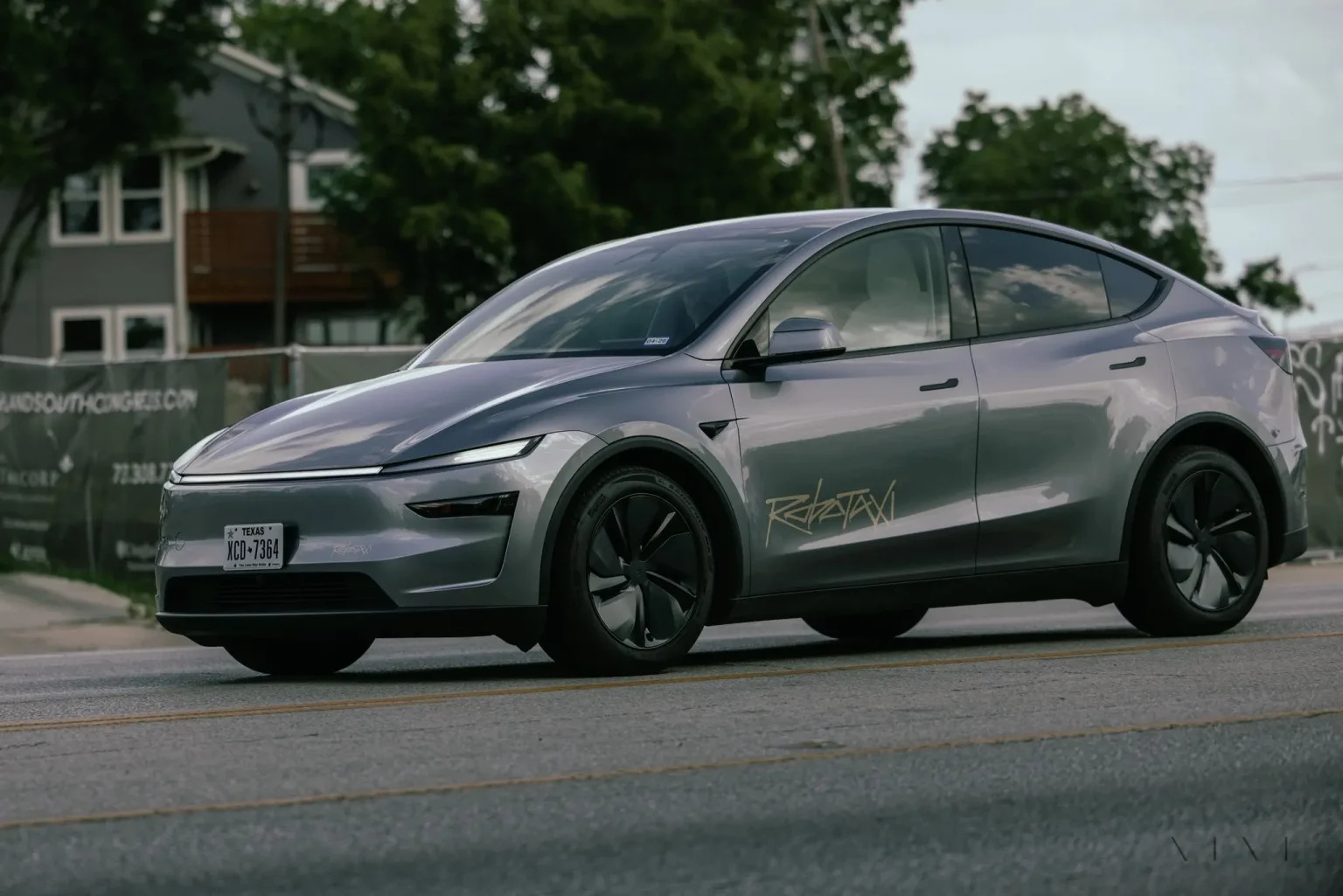
Tesla needs to come through on this one Robotaxi metric, Mark Delaney of Goldman Sachs says.
Tesla is in the process of rolling out its Robotaxi platform to areas outside of Austin and the California Bay Area. It has plans to launch in five additional cities, including Houston, Dallas, Miami, Las Vegas, and Phoenix.
However, the company’s expansion is not what the focus needs to be, according to Delaney. It’s the speed of deployment.
The analyst said:
“We think the key focus from here will be how fast Tesla can scale driverless operations (including if Tesla’s approach to software/hardware allows it to scale significantly faster than competitors, as the company has argued), and on profitability.”
Profitability will come as the Robotaxi fleet expands. Making that money will be dependent on when Tesla can initiate rides in more areas, giving more customers access to the program.
There are some additional things that the company needs to make happen ahead of the major Robotaxi expansion, one of those things is launching driverless rides in Austin, the first city in which it launched the program.
This week, Tesla started testing driverless Robotaxi rides in Austin, as two different Model Y units were spotted with no occupants, a huge step in the company’s plans for the ride-sharing platform.
Tesla Robotaxi goes driverless as Musk confirms Safety Monitor removal testing
CEO Elon Musk has been hoping to remove Safety Monitors from Robotaxis in Austin for several months, first mentioning the plan to have them out by the end of 2025 in September. He confirmed on Sunday that Tesla had officially removed vehicle occupants and started testing truly unsupervised rides.
Although Safety Monitors in Austin have been sitting in the passenger’s seat, they have still had the ability to override things in case of an emergency. After all, the ultimate goal was safety and avoiding any accidents or injuries.
Goldman Sachs reiterated its ‘Neutral’ rating and its $400 price target. Delaney said, “Tesla is making progress with its autonomous technology,” and recent developments make it evident that this is true.
Investor's Corner
Tesla gets bold Robotaxi prediction from Wall Street firm
Last week, Andrew Percoco took over Tesla analysis for Morgan Stanley from Adam Jonas, who covered the stock for years. Percoco seems to be less optimistic and bullish on Tesla shares, while still being fair and balanced in his analysis.
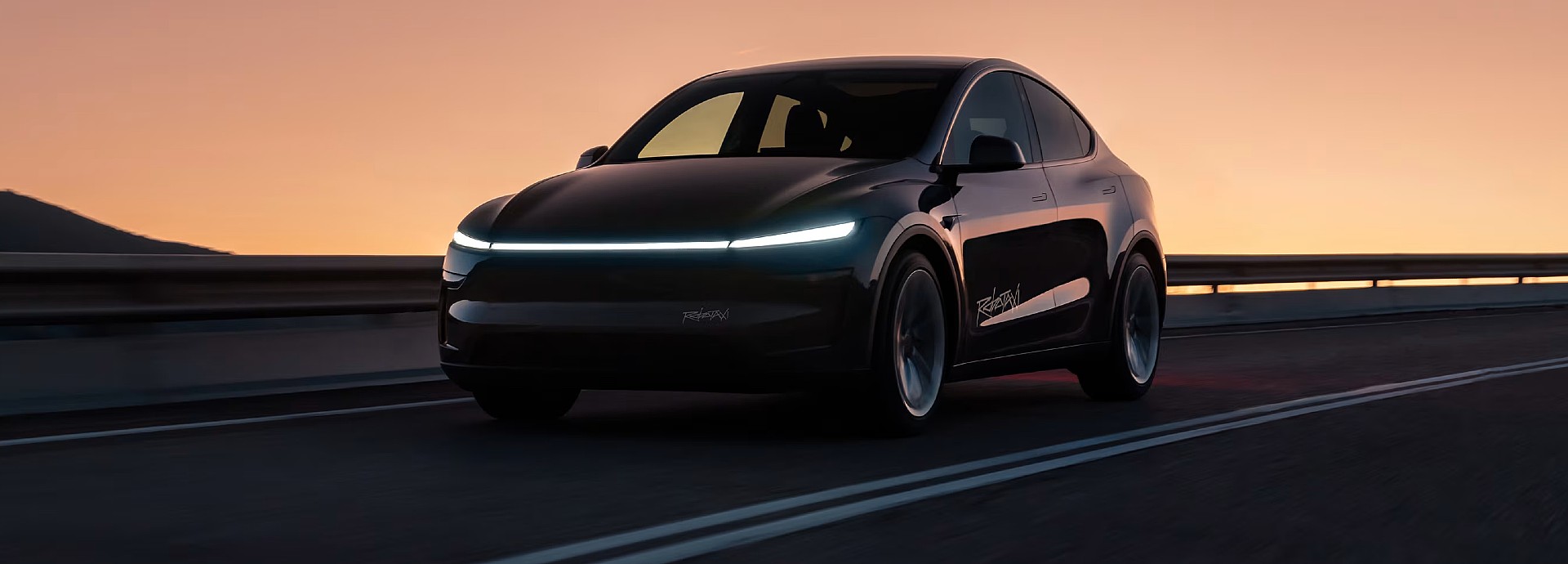
Tesla (NASDAQ: TSLA) received a bold Robotaxi prediction from Morgan Stanley, which anticipates a dramatic increase in the size of the company’s autonomous ride-hailing suite in the coming years.
Last week, Andrew Percoco took over Tesla analysis for Morgan Stanley from Adam Jonas, who covered the stock for years. Percoco seems to be less optimistic and bullish on Tesla shares, while still being fair and balanced in his analysis.
Percoco dug into the Robotaxi fleet and its expansion in the coming years in his latest note, released on Tuesday. The firm expects Tesla to increase the Robotaxi fleet size to 1,000 vehicles in 2026. However, that’s small-scale compared to what they expect from Tesla in a decade.
Tesla expands Robotaxi app access once again, this time on a global scale
By 2035, Morgan Stanley believes there will be one million Robotaxis on the road across multiple cities, a major jump and a considerable fleet size. We assume this means the fleet of vehicles Tesla will operate internally, and not including passenger-owned vehicles that could be added through software updates.
He also listed three specific catalysts that investors should pay attention to, as these will represent the company being on track to achieve its Robotaxi dreams:
- Opening Robotaxi to the public without a Safety Monitor. Timing is unclear, but it appears that Tesla is getting closer by the day.
- Improvement in safety metrics without the Safety Monitor. Tesla’s ability to improve its safety metrics as it scales miles driven without the Safety Monitor is imperative as it looks to scale in new states and cities in 2026.
- Cybercab start of production, targeted for April 2026. Tesla’s Cybercab is a purpose-built vehicle (no steering wheel or pedals, only two seats) that is expected to be produced through its state-of-the-art unboxed manufacturing process, offering further cost reductions and thus accelerating adoption over time.
Robotaxi stands to be one of Tesla’s most significant revenue contributors, especially as the company plans to continue expanding its ride-hailing service across the world in the coming years.
Its current deployment strategy is controlled and conservative to avoid any drastic and potentially program-ruining incidents.
So far, the program, which is active in Austin and the California Bay Area, has been widely successful.








